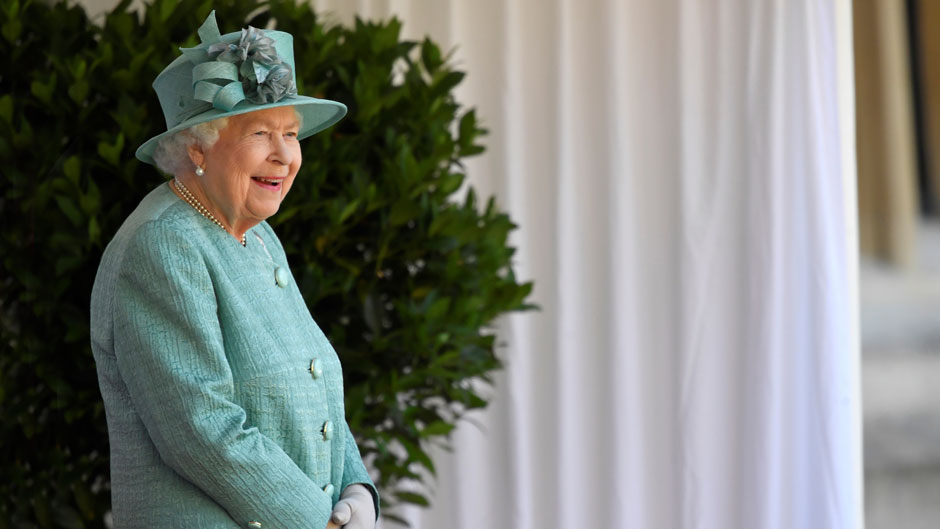The encounters were brief, but on all three occasions that John Quelch met Britain’s longest-reigning monarch, he walked away feeling he had engaged in a heart-to-heart talk.
“When I met her, she was a very attentive, curious person and asked very good questions,” Quelch, the London-born dean of the University of Miami Patti and Allan Herbert Business School, recalled of his meetings with Queen Elizabeth II.
“She was a person of very few words, but I felt that I had had a personal conversation with her on each occasion,” he added. “Given the enormous number of people with whom she had to interact daily, it was a tremendous skill to be able to appear in a genuine, authentic way to be so attentive a listener to everyone with whom she met. She was what we would call the consummate quiet leader—no drama, just solid, sound wisdom, and good judgment, representing continuity and stability.”
Elizabeth, who ascended to the throne in 1952 at age 25 and became a symbol of stability during an era that saw the decline of the British empire, passed away Thursday at Balmoral Castle in Scotland. She was 96.
Prince Charles, her 73-year-old son, automatically became king and will be known as King Charles III.
“The exemplary gold standard monarch of the world who set the standard for all monarchs” is how Quelch remembers her. He met Queen Elizabeth on three occasions—at royal garden parties at Buckingham Palace and the British Embassy in Washington, D.C., and at the palace to receive an award as Commander of the Order of the British Empire.
The queen’s death comes seven months after she celebrated a platinum jubilee, marking her 70th year on the British throne. It was a reign that saw a multitude of milestones and accomplishments, from leading her country out of the ravages of war to adapting the monarchy to the modern era.
But by far, Elizabeth’s most significant achievement was to preserve the symbolic resonance of the British monarchy during 70 years of massive change, said Philip Harling, a professor of history in the College of Arts and Sciences, who is a specialist in the modern history of Britain and the British Empire.
“It helped that the crown had been shorn of all its formal political powers by the time Victoria acceded to the throne, well over a century before Elizabeth II did. Henceforth the role of the monarch was largely ceremonial and symbolic, and, like Victoria before her, what Elizabeth II most obviously projected was a kind of stability,” Harling said. “Quite unlike Victoria, who presided over an era of remarkable British hegemony, Elizabeth II reigned through a long postwar era which saw the abrupt dismantling of the British empire, the social and cultural revolutions of the 1960s, the political and economic tumult of the 1970s, the rise of neoliberalism in its Thatcherite guise, the long but certain decline of Britain’s great-power status, and the UK’s abrupt withdrawal from the European Union.”
Through all those massive changes, Elizabeth conveyed a sense of stability that had much to do with her “manifest dedication to duty, with her reticence, with her resolutely stiff upper lip, and with her commitment to an old-fashioned mode of royal dignity,” Harling said. “These qualities sometimes clashed with popular sentiment, when they seemed to suggest not so much stability as a refusal to change—most notably at the time of Princess Diana’s tragic death in 1997, when the Queen was widely deemed to have been aloof and out of touch.”
Elizabeth greeted Winston Churchill as her first prime minister, Liz Truss as her last, and 13 others in between. And it was that longevity, along with her steadfastness, that “ultimately secured her a broad measure of personal respect, even from a good many critics of the royal institution she embodied,” Harling added.
Hugh Thomas, professor of history and director of the Center for the Humanities, echoed Harling’s sentiments.
“Her biggest achievement, for better or worse, is maintaining the monarchy as an important symbol for British people in a period of remarkable change, including the end of empire and the massive economic, social, and cultural transformations that have happened since her coronation,” he said. “This is all the more extraordinary in a time when monarchy is generally an anachronistic institution and when scandals in the royal family, though nothing new, are widely and constantly publicized by the modern media.”
For British-born Andrew Baker, a professor of marine biology and ecology at the Rosenstiel School of Marine, Atmospheric, and Earth Science, Queen Elizabeth II was a “fixed waypoint in a world of accelerating change,” he said.
“I can’t think of a single individual anywhere in the world who is so universally recognized as being a constant in a world that changed so much in the last 70 years,” Baker added. “And for many Britons in particular, the prospect of Britain without her is almost like imagining a parallel universe, or a world that never was. It will take some time for the UK to regain its bearings.”
Born Elizabeth Alexandra Mary on April 21, 1926, she served in World War II as a teen princess, driving and maintaining vehicles as a member of the Auxiliary Territorial Service, the women’s branch of the British Army. In doing so, she became the first female member of the royal family to serve as a full-time active member of the military.
“She was certainly an iconic figure of the 20th century and beyond,” said Louise K. Davidson-Schmich, a professor of political science, who also holds an appointment in Gender and Sexuality Studies. “Her leadership during World War II, before she ascended to the throne, and her prominent public role as queen in the 1950s and 1960s, as women returned to more domestic roles after the war, helped pave the way for Margaret Thatcher to become the UK’s first woman prime minister in the 1970s.”
Added Davidson-Schmich, “She will be a hard act for Charles to follow.”

